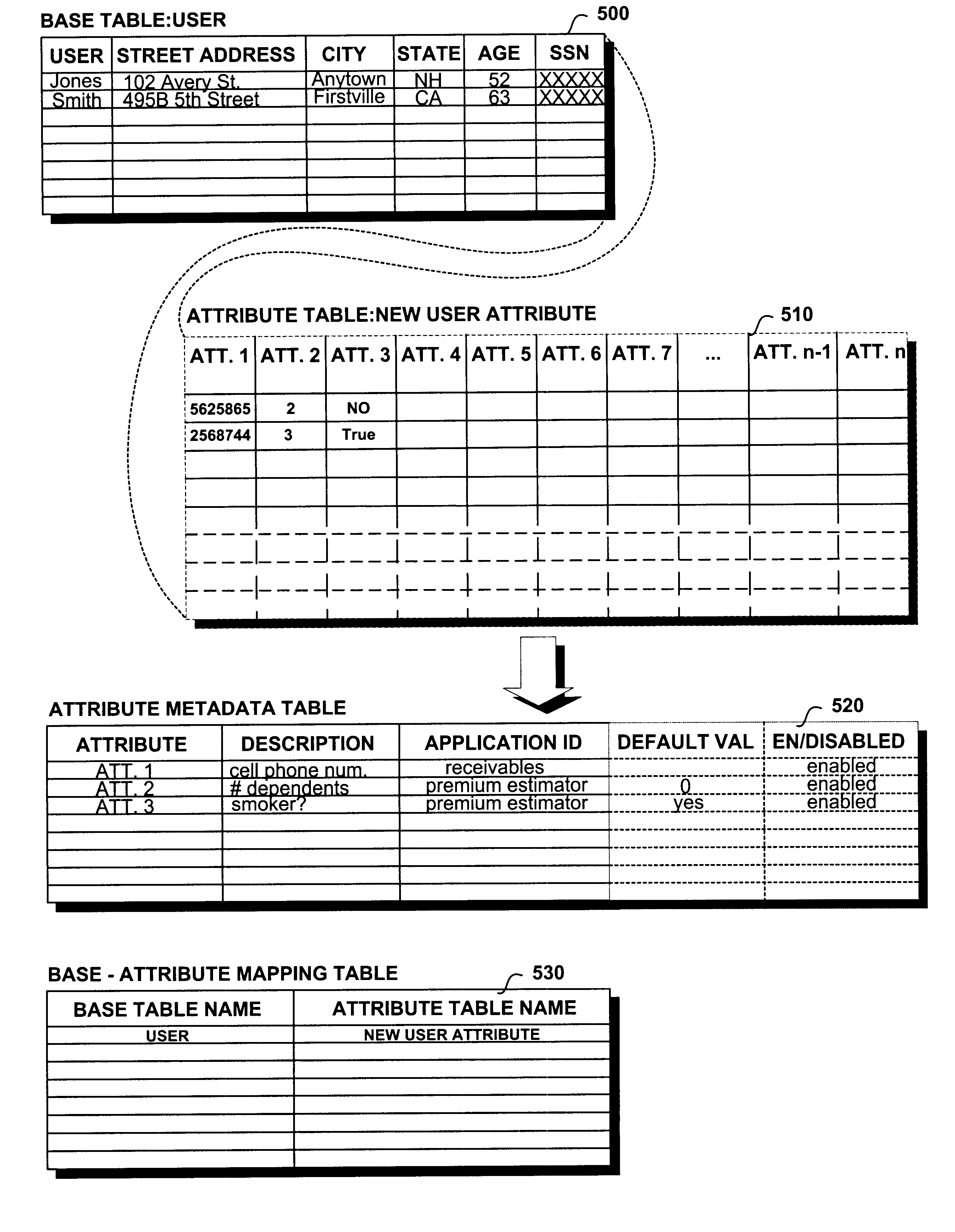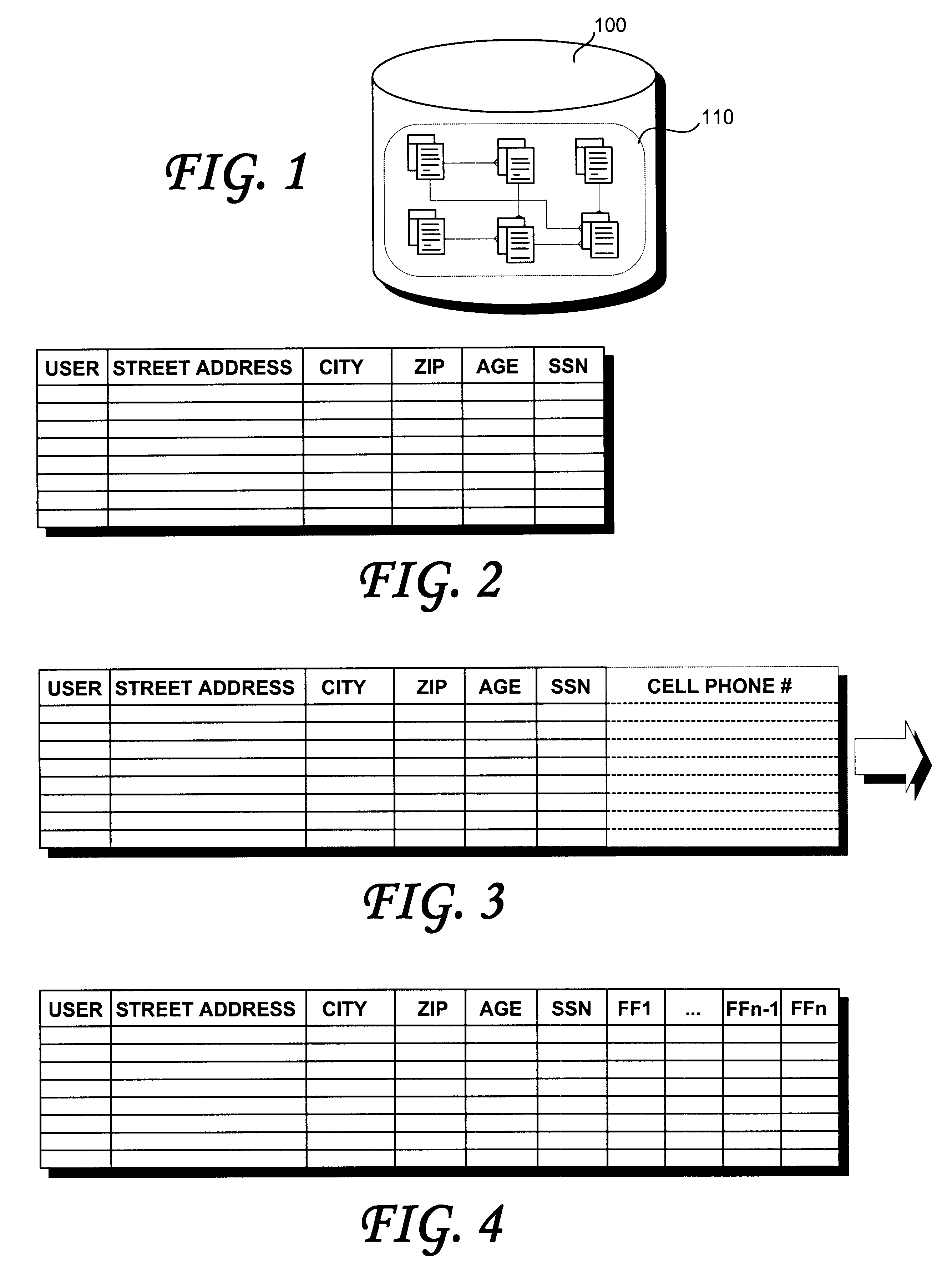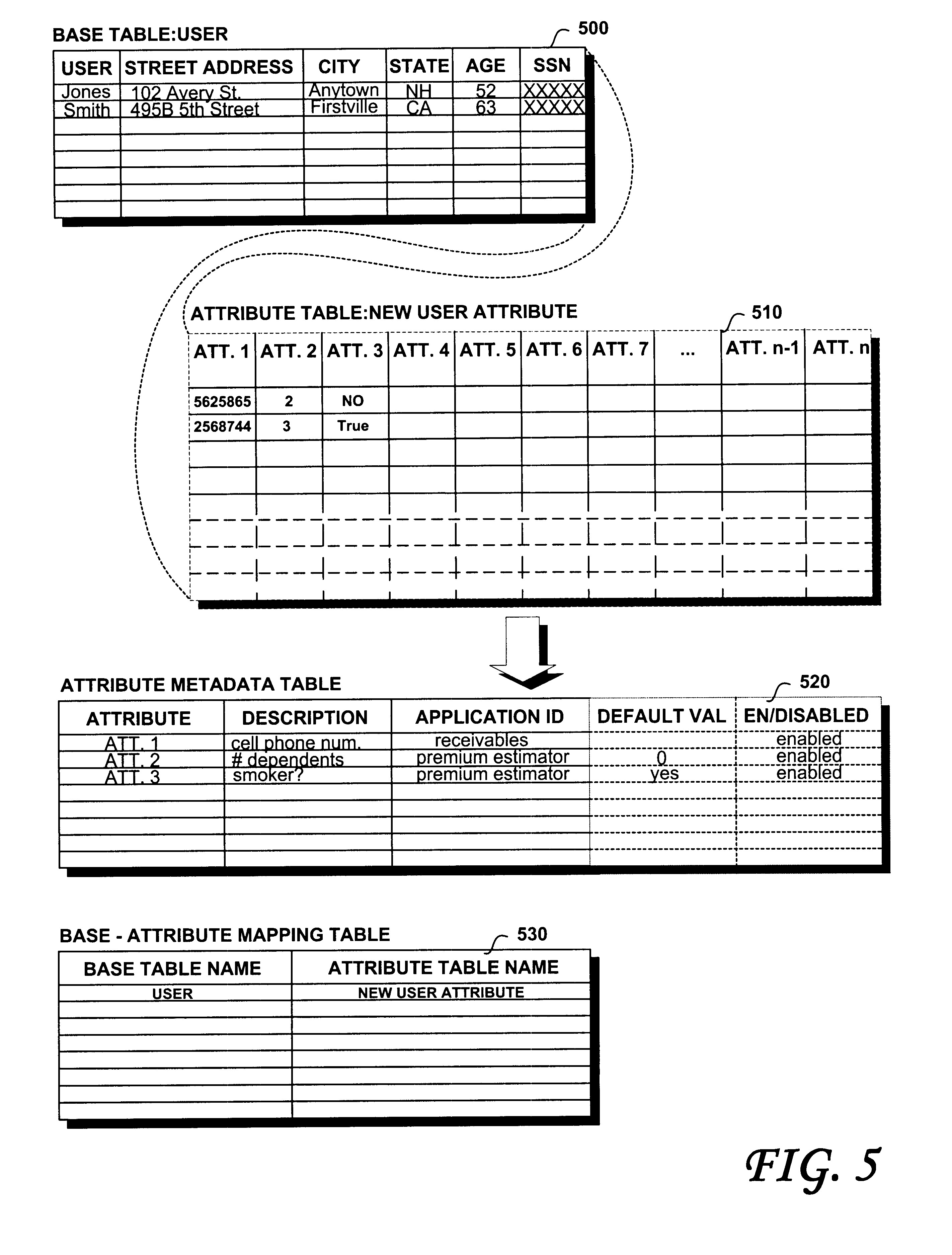Methods and systems for runtime optimization and customization of database applications and application entities
- Summary
- Abstract
- Description
- Claims
- Application Information
AI Technical Summary
Problems solved by technology
Method used
Image
Examples
Embodiment Construction
Definitions:
Profile type: Profile type defines the type of profile information being maintained. For instance, a UserProfile type defines information about users.
Profile object: A profile object is an instance of a profile type. For instance, information about a specific user may be defined in a user profile object.
Base attribute: Base attributes include the generic information maintained by a profile type. Base attributes may be defined for all profile objects of a profile type. For instance, if a user's name and address are base attributes of profile objects of type UserProfile, then all such user profile objects would include information about these attributes.
Extended attributes: Extended (also called instance-specific) attributes include additional information maintained by a profile type only for some base attribute values. Unlike base attributes, extended attributes may not be defined for all profile objects of a profile type. For instance, if a user pro...
PUM
 Login to View More
Login to View More Abstract
Description
Claims
Application Information
 Login to View More
Login to View More - R&D
- Intellectual Property
- Life Sciences
- Materials
- Tech Scout
- Unparalleled Data Quality
- Higher Quality Content
- 60% Fewer Hallucinations
Browse by: Latest US Patents, China's latest patents, Technical Efficacy Thesaurus, Application Domain, Technology Topic, Popular Technical Reports.
© 2025 PatSnap. All rights reserved.Legal|Privacy policy|Modern Slavery Act Transparency Statement|Sitemap|About US| Contact US: help@patsnap.com



